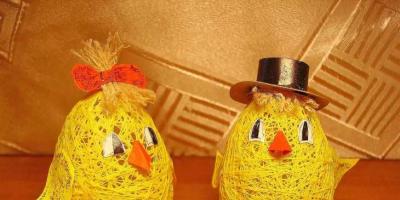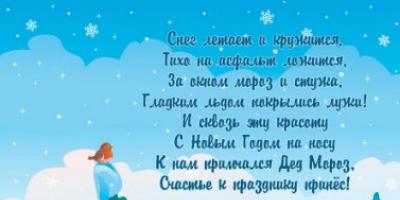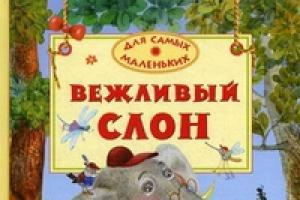The name "Easter" comes from the Greek πάσχα. This word exists in Latin, and was formed from the Hebrew “passover,” which translated means “passed by” or “deliverance.”
It was believed that on this day the destroying angel did not touch the inhabitants, since in their houses the jambs of windows and doors were smeared with the blood of a lamb. This sacrifice was called Easter. The holiday was celebrated by Jews even before the birth of Christ. In the past, the Israelites celebrated Passover on the night of the 14th to the 15th in the first lunar month of Nisan, this was the night of their liberation from the slavery of the Egyptians. It was on this night that Jesus was crucified. On the 3rd day, Jesus was resurrected, so this day began to be called the Resurrection. At the first Ecumenical Council in 325, a decision was made to celebrate Easter on Sunday, which occurs after the night of the full moon, which follows the spring equinox. When Christ died, he redeemed us from our sins, he sacrificed his life, and at the resurrection he granted forgiveness to everyone. The holiday is considered the main Orthodox holiday, since it was on this day that people were cleansed of all created sins and blessed.
Before Easter, people fast for 48 days, which cleanses them of bad thoughts and helps free the body from bad influences. Even under the Tsar in Russia, on this day prisoners who committed non-criminal crimes were forgiven. Easter is celebrated at different times every year, calculating its occurrence according to the solar-lunar calendar. The holiday is celebrated on the night from Saturday to Sunday.
The common people celebrated Easter as a renewal of life. This happened not only because of the Rebirth of Jesus, but also because of the spring awakening of nature after the winter season. On Easter, people were supposed to forget all evil and resentment, reject bad thoughts, and not sin.
Kulich
A large Easter cake baked using yeast, with a cross or an image of the Resurrection, is considered in the church to be a baked product that symbolizes the rebirth of Christ. In Greek, leavened bread is called Artos. This is a pastry with a silhouette of a thorn halo, a cross design, and also a prosphora. They are baked for Easter. According to the Old Testament, Christ, after his resurrection, visited the disciples-apostles during their meals. Therefore, when they began the meal, they left an empty part in the center of their table empty, and they put bread there for Christ, who was invisibly present at the meal.
On Easter, the artos is taken out with the religious procession, and after it is placed in the church on a separate table. Artos lies on the table for seven days. On Bright Week, Saturday, Artos is given to believers.
Kulich is baked like Artos, adding raisins and nuts. It is made on Holy Week on Thursday, and then it is consecrated in the temple.
Eggs are painted as a symbol of the resurrection of Christ. They also make a sweet dessert from cottage cheese, which is called Easter. Sweet cottage cheese is placed on a plate in the shape of a pyramid; it symbolizes the coffin in which the miracle of resurrection occurred. Because of this, the letters “X” are made from raisins on the top of the Easter. IN." (Christ is Risen!), a cross is laid out on the sides.
Please explain why Easter is celebrated, if Easter was celebrated even before the birth of Christ, and naturally did not mean the resurrection of Christ?
Hieromonk Job (Gumerov) answers:
Before the birth of Christ, there were Old Testament holidays, which, according to the word of St. the apostle Paul were only a shadow of the future, but the body is in Christ(Col. 2:17). They are prototypes of the New Testament holidays. The ancient Jewish Passover was celebrated in memory of the miraculous deliverance from Egyptian captivity (Ex. 12: 1-24). This holiday was called Easter (Heb. Passover; from a verb meaning jump over something, leave it untouched), because the angel of the Lord, striking the firstborn of Egypt, passed by the houses of the Jews, whose doorposts and lintels were anointed with the blood of the sacrificial lamb.
Ours is Christ (1 Cor 5.7), Who as a Lamb offered Himself as a Sacrifice on the Cross for our redemption and rose again on the third day. Resurrection is victory over death and hope for a future general resurrection. I live and you will live"(John 14.19).
In the Easter stichera the following words are sung: “Easter Christ the Deliverer”; in other words, the Savior, as it is sung in the lamp: “Easter is incorruptible, the salvation of the world.” But most often - after the words “Christ is Risen!” and “Truly he is risen!”—we hear one word: “Easter.”
This is how this holiday is usually called by everyone and everywhere, which means that its main meaning is concentrated in this word; and therefore let us briefly recall the well-known history of this holiday.
When the Lord decided to free the people of Israel after 430 years of captivity, the Egyptian pharaoh at first did not want to release the free labor force from his land. Then God, through Moses and Aaron, punished the country with great plagues. But Pharaoh did not humble himself and did not obey the command of God. Then the Lord decided to send the last plague on the Egyptians: to kill every firstborn creature - from man to livestock - in every house, from Pharaoh to the slave girl grinding at the millstone. And the Jews will be spared. But to do this, they must anoint the doorposts and lintels of their houses with the blood of a special lamb, slain as a sacrifice to God in place of the firstborn. And then the destroying angel will pass by the Jewish houses; and all of them will remain alive; and the firstborn of Egypt will die.
At midnight this execution took place. And the Jews fulfilled what God commanded through Moses and were saved from death. Then Pharaoh and the people began to beg the Israelites to quickly leave their land. And they hastily left and freed themselves from Egyptian captivity. And according to the commandment of God, they established for all time to celebrate this “night of vigil”, as a sign of the salvation of their firstborn and, in general, the liberation of the entire people. And that day itself was called “Easter,” which means “passed by.” That is, the destroying angel that night passed—in Hebrew “passover”—past the Jewish doors marked with the blood of the lamb; and this lamb began to be called the “Paschal lamb” or “Easter” for short. This means that the word “Easter” in Russian can be translated as “passing” of death by the Jews; or - salvation from death, deliverance from execution; and then - liberation from captivity for the return to their promised land, which was then the purpose of God's Providence for the chosen people.
And the Jews celebrated this event on the Passover holiday according to a special ritual: they slaughtered a pure one-year-old lamb; without crushing his bones, they baked him on fire; and ate it that night with unleavened bread and bitter herbs. And the remains of the bones were burned in the morning. Moreover, they ate in girded robes, with shoes and staves in their hands, as if ready for the journey from Egypt. “: ...this is the Passover of the Lord. And may this day be memorable to you; and celebrate this feast of the Lord throughout all your generations...” (Ex. 12, I, 14).
And from that time on, this holiday became the head of all Jewish holidays for all times.
“And when your children say to you, What kind of service is this? tell them: this is the Passover sacrifice to the Lord, who passed by the houses of the children of Israel in Egypt when he defeated the Egyptians, and delivered our houses" ( Ref. 12, 26-27).
And it came out of Egypt "up to six hundred thousand men on foot, excluding children" (Ex. 12:37).
Thus began the accomplishment of the salvation of the chosen people.
Source: www.pravmir.ru
From here the Christian meaning of Easter becomes clear: salvation by Christ (as Easter = sacrifice) from the power of the devil.
“Behold the Lamb of God, who takes away the sin of the world.” (John 1:29).
“Our Easter, Christ, was sacrificed for us” (1 Cor. 5:7).
Jews celebrate Passover as a holiday of Freedom in memory of the Exodus of the Jews from Egypt (for more details, see Passover is the oldest of the Jewish holidays.), while Christians have put a different meaning into this day and celebrate it as the resurrection of Christ. Just as death passed by the homes of the Jews, and they were freed from Egyptian slavery and received the Promised Land, so on Christian Easter, Resurrection of Christ, eternal death passed by us: The Risen Christ, having freed us from the slavery of the devil, gave us eternal life.
The holiday of the Holy Resurrection of Christ, Easter, is the main event of the year for Orthodox Christians and the largest Orthodox holiday. The word "Easter" came to us from the Greek language and means "passing", "deliverance". On this day we celebrate the deliverance through Christ the Savior of all mankind from slavery to the devil and the granting of life and eternal bliss to us. Just as our redemption was accomplished by Christ’s death on the cross, so by His Resurrection we were given eternal life.
The Resurrection of Christ is the basis and crown of our faith, this is the first and greatest truth that the apostles began to preach.
Read more about Easter:
Passion of Christ
Easter: History and Traditions
Easter - Holy Resurrection
Easter is the way out of hell
Original post and comments at
In Christianity, when believers celebrate the day of Jesus Christ's resurrection from the dead.
Easter
According to the Bible, the son of God Jesus Christ suffered martyrdom on the cross to atone for the sins of mankind. He was crucified on a cross mounted on a mountain called Golgotha on Friday, which in the Christian calendar is called Passion. After Jesus Christ, along with others sentenced to death on the cross, died in terrible agony, he was transferred to a cave, where his body was left.On the night from Saturday to Sunday, the repentant Mary Magdalene and her companions, who, like her, accepted the Christian faith, came to this cave to say goodbye to Jesus and pay him their last tribute of love and respect. However, upon entering there, they found out that the tomb where his body was located was empty, and two angels told them that Jesus Christ had risen.
The name of this holiday comes from the Hebrew word “Pesach”, which means “deliverance”, “exodus”, “mercy”. It is connected with the events described in the Torah and the Old Testament - with the tenth, most terrible of the Egyptian plagues that God brought down on the Egyptian people. As the legend tells, this time the punishment was that all first-born children, both human and animal, died a sudden death.
The only exception was the houses of those people who were marked with a special sign applied by the blood of a lamb - an innocent lamb. Researchers claim that the borrowing of this name to refer to the holiday of the resurrection of Christ was due to the Christian belief that he was innocent like this lamb.
Easter celebration
In the Christian tradition, Easter is celebrated according to the lunisolar calendar, so the date of its celebration varies from year to year. This date is calculated so that it falls on the first Sunday after the spring full moon. At the same time, emphasizing the essence of this holiday, Easter is always celebrated only.The celebration of Easter is associated with a lot of traditions. Thus, it is preceded by Lent - the longest and strictest period of abstinence from many types of food and entertainment throughout the year. It is customary to celebrate the onset of Easter by placing on the table colored Easter cakes and, in fact, a curd dish in the shape of a pyramid with a truncated top.
In addition, the symbol of the holiday are colored boiled eggs: they are considered to reflect the legend of how Mary Magdalene presented an egg to Emperor Tiberius as a sign that Jesus Christ had risen. He said that this was impossible, just as an egg cannot suddenly turn from white to red, and the egg instantly turned red. Since then, believers have been painting eggs red for Easter. It is customary to greet each other on this day with the phrase “Christ is Risen!”, to which they usually answer “Truly He is Risen!”
Last updated - 01/25/2017
Easter - the Holy Resurrection of Christ, the main holiday of Christians, Orthodox and Catholics celebrate April 16 in 2017.
The Church celebrates Easter for 40 days - the same amount of time that Christ was with his disciples after His Resurrection. The first week after the Resurrection of Christ is called Bright or Easter Week.
Icon of the Resurrection of Christ.
Christ's Resurrection in the Gospels
The Gospels say that Jesus Christ died on the cross on Friday at about three o'clock in the afternoon and was buried before dark. On the third day after the burial of Christ, early in the morning, several women (Mary Magdalene, Joanna, Salome and Mary of James and others with them) carried the incense they had bought to anoint the body of Jesus. Walking to the burial place, they grieved: “Who will roll away the stone for us?” - because, as the evangelist explains, the stone was great. But the stone had already been rolled away and the tomb was empty. This was seen by Mary Magdalene, who came first to the tomb, and by Peter and John, whom she called, and by the myrrh-bearing women, to whom the Resurrection of Christ was announced by a young man sitting at the tomb in luminous robes. The four Gospels describe this morning in the words of various witnesses who came to the tomb one after another. There are also stories about how the risen Christ appeared to the disciples and talked with them.
The meaning of the holiday
For Christians, this holiday means the transition from death to eternal life with Christ - from earth to heaven, which is also proclaimed by Easter hymns: “Easter, the Lord's Easter! For from death to life, and from earth to heaven, Christ God has led us, singing in victory.”
The Resurrection of Jesus Christ revealed the glory of His Divinity, previously hidden under the cover of humiliation: a shameful and terrible death on the cross next to crucified criminals and robbers.
With His Resurrection, Jesus Chrytos blessed and approved the resurrection for all people.
History of Easter
The Old Testament Passover (Passover) was celebrated as a remembrance of the exodus of the children of Israel from Egypt and deliverance from slavery. What is Passover?
In apostolic times, Easter combined two memories: the suffering and the Resurrection of Jesus Christ. The days preceding the Resurrection were called the Easter of suffering. The days after the Resurrection are Easter of the Cross or Easter of the Resurrection.
In the first centuries of Christianity, different communities celebrated Easter at different times. In the East, in Asia Minor, it was celebrated on the 14th day of the month of Nisan (March - April), no matter what day of the week this date fell on. The Western Church celebrated Easter on the first Sunday after the spring full moon.
At the First Ecumenical Council in 325, it was decided to celebrate Easter everywhere at the same time according to the Alexandrian Paschal. This continued until the 16th century, when the unity of Western and Eastern Christians in the celebration of Easter and other holidays was disrupted by the calendar reform of Pope Gregory XIII.
The Orthodox Church determines the date of Easter celebration according to the Alexandrian Paschal: the holiday must necessarily be on the Sunday after the Jewish Passover, after the full moon and after the spring equinox.
Church celebration of Easter
Since ancient times, Easter services have taken place at night. Like God’s chosen people - the Israelites, who were awake on the night of their deliverance from Egyptian slavery, Christians do not sleep on the sacred pre-holiday night of the Bright Resurrection of Christ.
Shortly before midnight on Holy Saturday, the Midnight Office is served, during which the priest and deacon approach the Shroud (a canvas depicting the body of Jesus Christ taken from the cross) and take it to the altar. The shroud is placed on the throne, where it must remain for 40 days until the day of the Ascension of the Lord (June 13, 2014) - in memory of the forty days of Christ’s stay on earth after His Resurrection.
The clergy take off their Saturday white vestments and put on the festive red Easter vestments. Before midnight, the solemn ringing of bells - the bell - announces the approach of the Resurrection of Christ.
Exactly at midnight, with the Royal Doors closed, the clergy in the altar quietly sing the stichera: “Thy Resurrection, O Christ the Savior, the angels sing in heaven, and grant us on earth with a pure heart to glorify Thee.” After this, the curtain is pulled back (the curtain behind the Royal Doors on the side of the altar), and the clergy again sing the same stichera, but this time loudly. The Royal Doors open, and the stichera, in an even higher voice, is sung by the clergy for the third time until the middle, and the temple choir sings the ending. The priests leave the altar and, together with the people, like the myrrh-bearing women who came to the tomb of Jesus Christ, walk around the temple in a procession of the cross, singing the same stichera.
Procession
The procession of the cross means the procession of the Church towards the risen Savior. Having walked around the temple, the procession stops in front of its closed doors, as if at the entrance to the Holy Sepulcher. The ringing stops. The rector of the temple and the clergy sing the joyful Easter troparion three times: “Christ is risen from the dead, trampling down death by death, and giving life (life) to those in the tombs!” Then the rector recites the verses of the ancient prophetic psalm of King David: “May God rise again and His enemies (enemies) be scattered...”, and the choir and people in response to each verse sing: “Christ is risen from the dead...”. Then the priest, holding a cross and a three-candlestick in his hands, makes the sign of the cross with them at the closed doors of the temple, they open, and everyone, rejoicing, enters the church, where all the lamps and lamps are burning, and everyone sings together: “Christ is risen from the dead!” .
Matins
Next they serve Easter Matins: they sing the canon compiled by Saint John of Damascus. Between the songs of the Easter Canon, priests with a cross and censer walk around the temple and greet parishioners with the words: “Christ is Risen!”, to which the believers answer: “Truly He is Risen!”
At the end of Matins, after the Paschal canon, the priest reads the “Word of St. John Chrysostom,” which speaks with inspiration about the joy and significance of this day. After the service, all those praying in the church greet each other with Christ, congratulating each other on the great holiday.
Immediately after Matins, the Easter Liturgy is served, where the beginning of the Gospel of John is read in different languages (if several priests are serving). On Easter, all those who pray, if possible, partake of the Holy Mysteries of Christ.
After the end of the festive service, Orthodox Christians usually “break their fast” - they treat themselves to blessed colored eggs and Easter cakes at the church or at home. About the tradition of baking Easter cakes
Why are eggs painted at Easter?
In Palestine, tombs were built in caves, and the entrance was closed with a stone, which was rolled away when the deceased was to be laid down.








